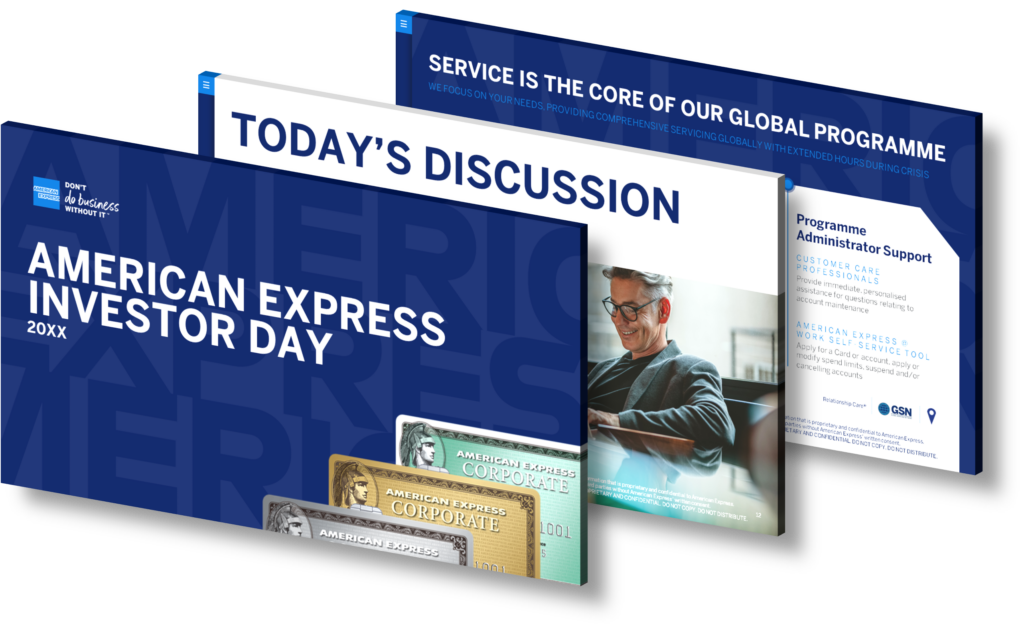How can healthcare analytics firms present complex financials engagingly to investors and CEOs using collaboration tools?
Healthcare analytics firms can present complex financials engagingly to investors and CEOs using collaboration tools by leveraging the power of professional presentation design services like SlideGenius. These services specialize in creating visually appealing and data-driven presentations, ensuring the message is clear, concise, and engaging.
Firstly, use visual data representation. Graphs, charts, and infographics can simplify complex data, making it easier to understand. With SlideGenius, you can have these visual aids designed professionally, adding a layer of sophistication and clarity to your presentation.
Secondly, storytelling can be an effective way to present complex financials. By weaving your data into a compelling narrative, you can make the information more relatable and memorable. SlideGenius can help you craft a compelling story that aligns with your brand and resonates with your audience.
Thirdly, you can use collaboration tools like Microsoft Teams or Zoom to present your financials in real-time. SlideGenius can optimize your presentation for these platforms, ensuring that it is visually engaging and interactive.
Finally, practice is key to a successful presentation. Rehearse your presentation multiple times to ensure you’re familiar with the content and can deliver it confidently. The SlideGenius team can provide feedback and revisions to ensure your presentation is as impactful as possible.
Remember, the goal is not just to present the data but to showcase the value and potential of your healthcare analytics firm. By presenting complex financials in an engaging and digestible way, you can make a powerful impression on investors and CEOs.
View Our Presentation Portfolio

What are some recommended accounting topics to include in a presentation?

When creating an accounting presentation, it’s essential to cover key topics that provide valuable insights into financial operations, compliance, and performance. Depending on the purpose of the presentation—whether for internal reporting, client meetings, or educational purposes—here are some recommended accounting topics:
1. Financial Statements Overview
- Balance Sheet: Presenting a company’s financial position, including assets, liabilities, and equity.
- Income Statement: Showing revenues, expenses, and net income to reflect profitability over a period.
- Cash Flow Statement: Analyzing cash inflows and outflows related to operating, investing, and financing activities.
2. Revenue Recognition
- Discuss the principles of revenue recognition and how they apply under various accounting standards (e.g., IFRS 15 and ASC 606). This is particularly useful for stakeholders to understand when and how revenue is recognized in financial reports.
3. Depreciation and Amortization
- Explain the methods used for depreciation (e.g., straight-line, double declining balance) and amortization of assets, highlighting their impact on financial statements.
4. Cost Accounting and Budgeting
- Cover cost management techniques, including fixed vs. variable costs, direct vs. indirect costs, and how they influence budgeting and decision-making. Discuss budgeting methods like zero-based budgeting and variance analysis.
5. Tax Accounting
- Review tax provisions and deferred tax liabilities/assets. This can include updates on the latest tax regulations, corporate tax strategies, or an overview of tax compliance.
6. Auditing and Internal Controls
- Provide an overview of audit processes and the importance of internal controls for ensuring compliance and accuracy in financial reporting. Discuss common audit findings and recommendations for strengthening internal controls.
7. Break-even Analysis
- Explain the concept of break-even analysis, which helps businesses understand how much they need to sell to cover costs, and when they will start making a profit.
8. Key Financial Ratios
- Present financial ratios such as liquidity ratios (current ratio, quick ratio), profitability ratios (gross margin, return on assets), and efficiency ratios (inventory turnover, accounts receivable turnover). These help in assessing a company’s financial health.
9. Accounts Receivable and Payable Management
- Discuss the management of accounts receivable (AR) and accounts payable (AP), focusing on credit terms, collection policies, and the impact of AR and AP on cash flow.
10. Variance Analysis
- Analyze the difference between budgeted vs. actual performance. Variance analysis provides insights into financial performance and is essential for understanding deviations from budgeted figures.
11. Ethics in Accounting
- Discuss the importance of ethical accounting practices and professional responsibility in financial reporting. Highlight relevant regulations and frameworks like GAAP or IFRS, and how they guide ethical behavior in accounting.
12. Mergers and Acquisitions Accounting
- Provide an overview of accounting for M&A activities, including purchase price allocation, goodwill, and the impact of mergers and acquisitions on the financial statements.
13. Inventory Management and Costing Methods
- Explain inventory valuation methods like FIFO (First-In, First-Out), LIFO (Last-In, First-Out), and Weighted Average Cost. Discuss how these methods impact financial statements and tax liabilities.
14. Financial Forecasting
- Introduce techniques for financial forecasting, including pro-forma financial statements and predictive analytics. These projections help in making strategic decisions and assessing future financial performance.
15. Sustainability and Environmental Accounting
- Discuss how companies can account for environmental costs and sustainability efforts in their financial reporting. This topic is increasingly important for organizations committed to corporate social responsibility (CSR).
These topics offer a comprehensive range of accounting fundamentals that can be tailored depending on your audience and presentation purpose. Whether you are educating stakeholders, presenting financial data to executives, or explaining complex accounting principles, these areas cover the critical aspects of accounting in an accessible way.